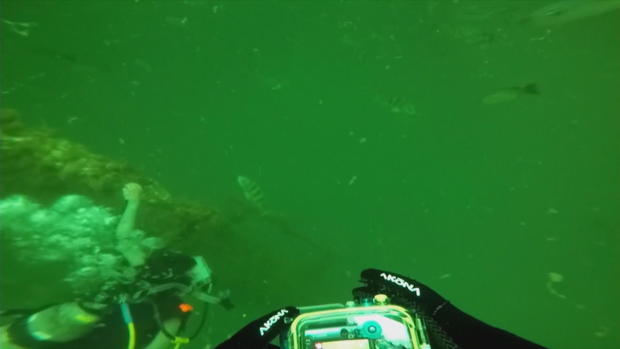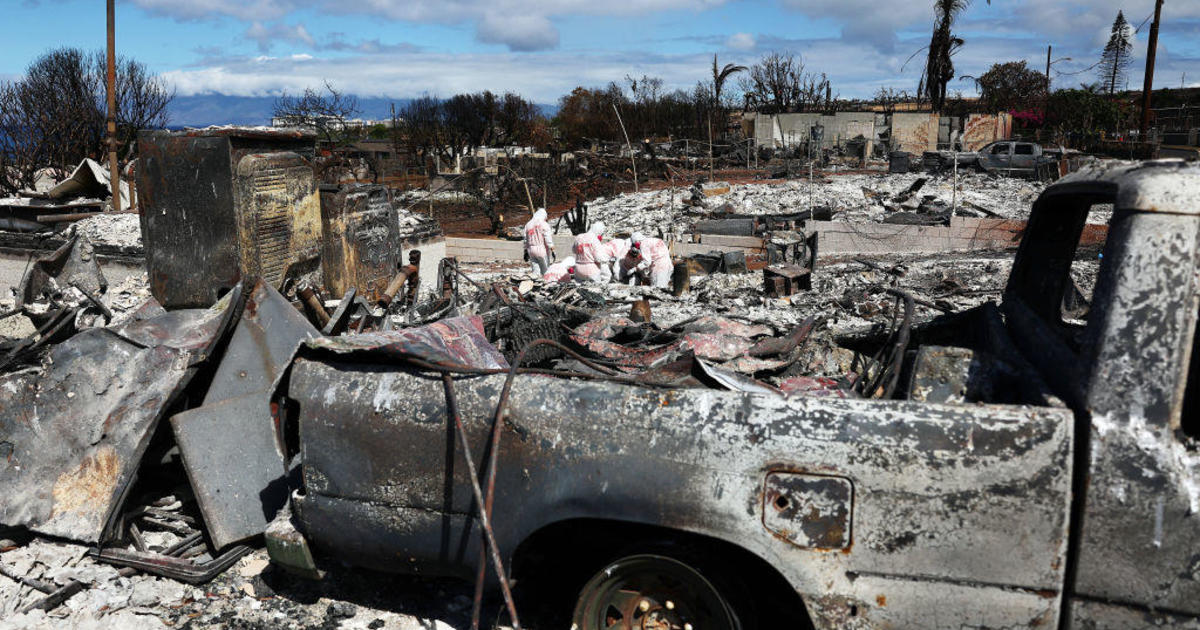Gulf of Mexico dead zone is "largest" ever recorded in U.S.
The largest dead zone ever recorded in the U.S. has appeared at the mouth of the Mississippi River.
According to scientists, it's primarily caused by fertilizer and sewage that wash off farmland in the river's watershed and eventually make their way to the sea, where they feed algae blooms and bacteria that suck all the oxygen out of the water.
Scientists announced this month the dead zone measures nearly 9,000 square miles – about the size of New Jersey, reports CBS News correspondent Jeff Glor.
Unusually heavy rains over the Midwest this spring flushed runoff and wastewater from farms down into the Gulf -- bad news for fishermen in Louisiana who produce more than 40 percent of the nation's seafood.
Underwater video recorded Tuesday afternoon shows the transition from life to death as green fades to black. It becomes so dark, divers need flashlights to find their way around. The abyss stretches over an enormous portion of the Gulf.
"This is the largest one we've ever measured. And the northern Gulf of Mexico dead zone is the second largest human-caused dead zone in the ocean," said Nancy Rabalais, the nation's foremost expert on dead zones. She's been measuring oxygen levels in the Gulf since 1985.
"It's a feature that's large, it's not getting smaller, and attempts to manage the nutrients, nitrogen, particularly from the Mississippi River, are not having an effect on reducing the size," Rabalais said.
Dead zones happen when agricultural runoff sends nitrogen-rich fertilizer downstream into the sea. The fertilizer feeds harmful amounts of algae at the surface that eventually die and sink to the bottom. Bacteria feast on the dead algae, removing oxygen from the water. Fish, crabs, and shrimp are forced to leave – or suffocate and die.
"The solution lies upstream in the watershed with better agricultural management practices -- a switch to crops that have deeper roots and don't need as much fertilizer and are still just as profitable as corn," Rabalais said.
The water we watched them measure has less than half the oxygen needed to support normal fish life.
"When you're a scuba diver, you're used to having fish swimming all around you. From 30 to 60 feet, we won't see any fish – nothing," Rabalais said.
"These species of shrimp are not there like they used to be," said O'Neil Jhonsebin. He's been fishing those waters for 40 years.
A study led by Duke University published this year found that dead zones in the Gulf of Mexico slow shrimp growth, resulting in higher market prices for larger shrimp.
Asked if she sees this issue getting better any time soon, Rabalais replied, "Boy, I wish it would. I really do wish it would."
The Environmental Protection Agency has set up a task force to try to shrink the size of the dead zone here in the Gulf.
By 2025, the agency hopes to reduce nutrient-rich runoff flowing down here by 20 percent.




